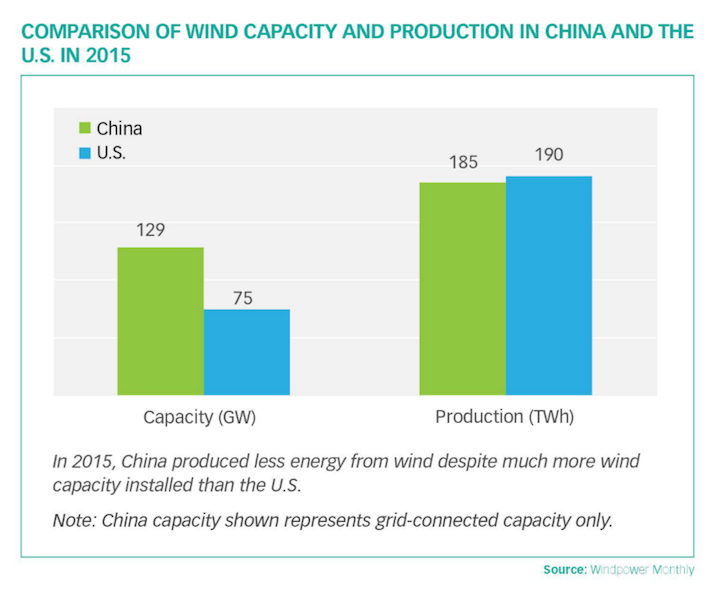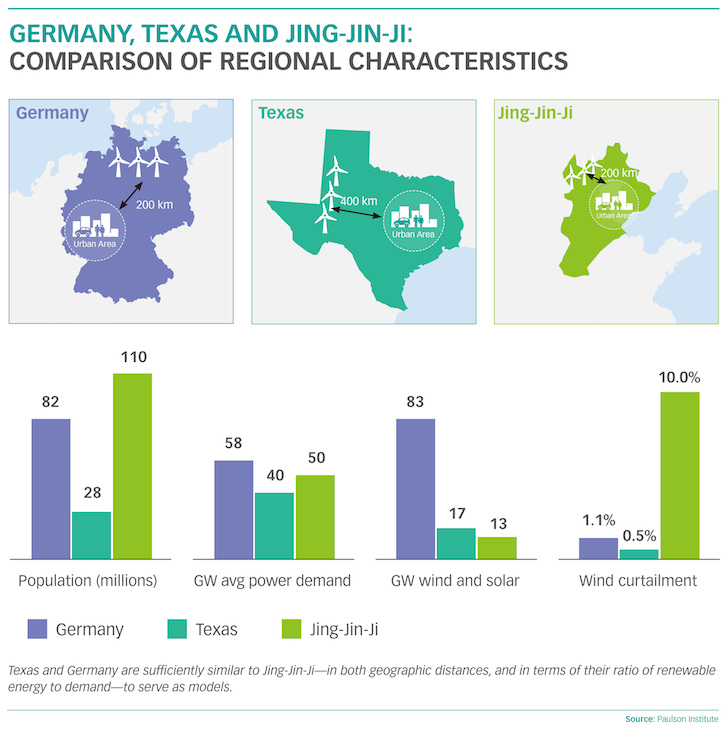
Although the United States has far lower wind energy capacity than China, it uses that capacity more efficiently, meaning its wind energy production is actually higher than China’s. According to a new Paulson Institute report, China’s renewable energy inefficiency results partly from uncoordinated planning, in which energy capacity is installed in China’s faraway Northwest, where there is wind and sun but little local demand for the energy. A more efficient approach would be to focus on the northeastern Jing-Jin-Ji region, which has renewable energy sources in close proximity to densely populated areas. The success of renewable energy programs in Texas and Germany, which are similar to Jing-Jin-Ji in electricity consumption, population, and distance between energy production and consumption areas, proves that such an approach is doable. The good news is that China has just announced that Jing-Jin-Ji will become a pilot zone for electricity market reforms, with the goals of maintaining electricity reliability, raising efficiency, and improving renewable integration. The recent report recommends that the region should also link renewable energy produced in parts of Hebei province with nearby centers of high electricity demand, including Beijing and Tianjin. By reforming renewables distribution markets, Jing-Jin-Ji has the chance to reduce emissions and cut air pollution—all before hosting the 2022 Winter Olympic Games.





